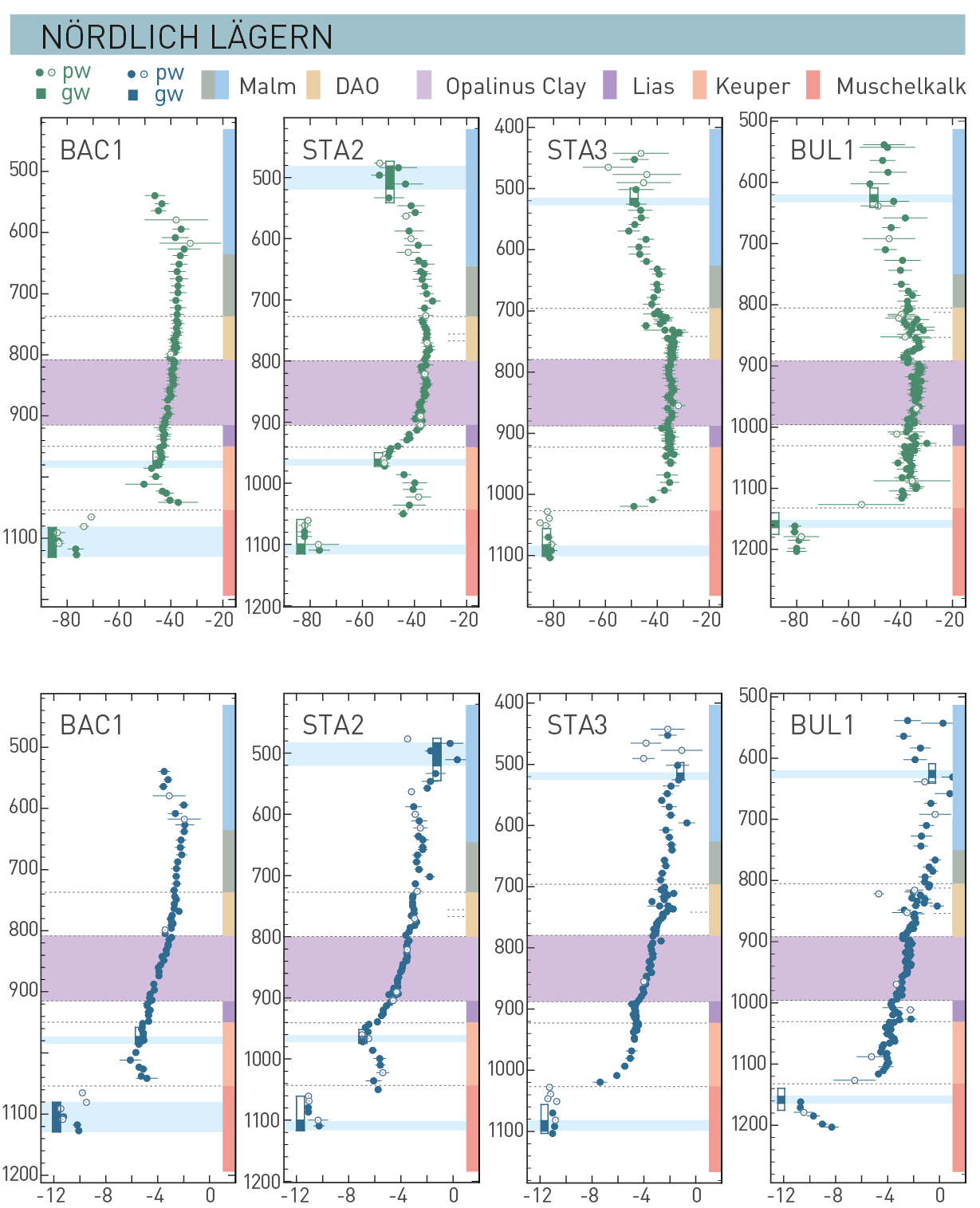In most deposits and landfills both above and below ground, clay and clay barriers are used to prevent or mitigate waste seepage and contamination. It is therefore unsurprising that clays, such as bentonite and clay rocks, are considered worldwide as host rocks and/or engineered barriers for geological repositories. Clay rocks, known for their low hydraulic conductivity and high radionuclide retention capacity, are, for example, being considered as potential host rocks, not only in Switzerland, but also in Belgium, Canada and France. As a specific example, in the proposed concept for a deep geological repository at Bure, France, the 130-metre-thick clay-rich unit of the Callovian-Oxfordian argillite formation, serves as a substantial natural barrier against radionuclide release to the surface (Andra 2022).
Clay rocks such as the Opalinus Clay have proven to provide robust transport barriers, or seals, in many different environments. Numerous examples exist in the oil and gas industry where clay-based seals have demonstrably and comprehensively been used to prevent oil and gas transport over timescales of thousands to millions of years. These seals not only confine fluids beneath them, but also within them, as evident from the many clay formations that produce oil and gas around the globe. Examples are the Duvernay and Canol Formations in Canada (Biddle et al. 2021, Lee et al. 2019), the Eagle Ford Shale in the USA (Speight 2020), and the Vaca Muerta Formation in Argentina (Casala et al. 2019). These clay formations are often overpressured due to in-situ oil and gas generation during burial by in-situ thermal maturation of the original organic matter, consistent with their low permeability. The effectiveness of clay formations as long-term seals has been demonstrated for various deep (often 1,000 m) oil and gas reservoirs, including cap rocks for CO2 disposal sites, even in the presence of significant tectonic faults. This suggests that clay formations, even when faulted, do not serve as major long-term conduits for flow due to their ductility and inherent ability to self-seal (Zhu et al. 2013). A comprehensive discussion and analysis of selected aspects of clay-based barrier performance in petroleum systems can be found in the work of Fisher et al. (2023).
Because of these properties, clay formations are frequently regarded as ideal cap rocks for shallow storage or for oil and gas reservoirs. Extensive exploration in oil-sand regions such as Venezuela and Canada have focused on understanding the thermo-hydro-mechanical behaviour of clay formations. Interbedded clay-rich units within sandy reservoirs can also act as discrete barriers to transport, influencing recovery performance due to their low permeabilities (Kumar & Hassanzadeh 2021, Gao et al. 2022).
Evidence from around the globe of slow diffusion-dominated transport in shales is complemented by a large body of isotope exchange (Aschwanden et al. 2024) and diffusion studies (Van Loon et al. 2023, Glaus et al. 2024b) from Northern Switzerland, particularly on Opalinus Clay (see Section 4.6 of NTB 24‑17, Nagra 2024i). The studies reveal prolonged porewater residence times and slow diffusion-dominated transport of solutes in the Opalinus Clay, where the repository will be located, in the overlying and underlying confining geological units and towards the bounding aquifers. Consistent aqueous concentration profiles of natural tracer profiles (Fig. 9‑1) suggest low hydraulic conductivity and minimal hydraulic gradients. Moreover, tracer profiles are not noticeably affected by the contrasting properties of the limestone-rich beds of the «Herrenwis Unit» of the upper confining geological units, which represent a regional reef mount (Nagra 2024i). The clays also exhibit a high sorption capacity (Marques Fernandes et al. 2024b).

Fig. 9‑1:Profiles of d2H [‰ VSMOW] (top row) and δ18O [‰ VSMOW] (bottom row) in porewater (pw) and groundwater (gw).
In general, the porewater profile within the Opalinus Clay (purple band in the background) down to the lower part of the Keuper is linear, whereas the profile in STA2 is characterised by a clearly curved profile or profile parts especially towards the top of the Keuper. The steep drop towards the aquifers show that the original porewater within the clay rock experienced little exchange with modern meteoric water (simplified from Figure 4-119 of NTB 24-17, Nagra 2024i). Porewater data were derived from diffusive isotope exchange experiments; open symbols: less reliable (potential artefacts or contamination with drilling fluid). Where groundwater could be sampled, open rectangles show packer intervals, closed rectangles and light blue bands in the background most likely inflow zones. DAO: Dogger Group above Opalinus Clay. Light blue background indicates the location of aquifers.

